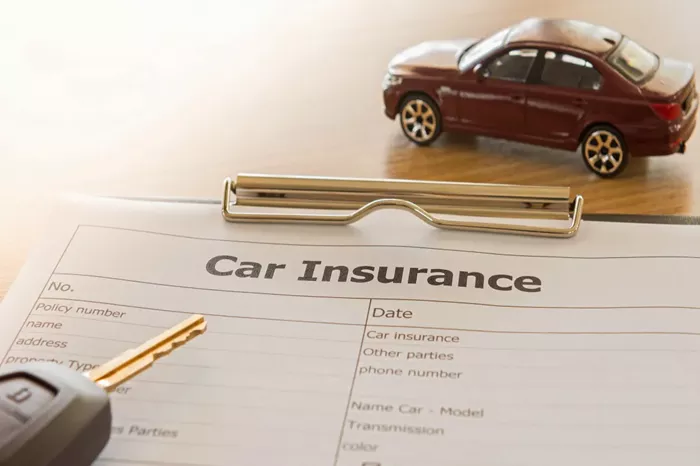Car insurance in the UK is a mandatory requirement for drivers, providing financial protection in the event of accidents, theft, or damage to the vehicle. Understanding how car insurance works in the UK can help drivers make informed decisions about their coverage options and ensure they are adequately protected.
Introduction to Car Insurance in the UK
Car insurance in the UK is governed by the Road Traffic Act 1988, which mandates that all drivers must have at least third-party insurance. This law ensures that drivers are financially responsible for any damage or injury they cause to other people or property while driving. The primary purpose of car insurance is to protect drivers, passengers, and pedestrians from financial loss due to accidents or other incidents involving a vehicle.
Types of Car Insurance in the UK
There are three main types of car insurance policies available in the UK: third-party only (TPO), third-party, fire and theft (TPFT), and comprehensive.
1. Third-Party Only (TPO)
Third-party only insurance is the minimum legal requirement for drivers in the UK. It covers the cost of any damage or injury caused to other people, their vehicles, or property. However, it does not cover any damage to the policyholder’s own vehicle or any personal injuries they may suffer in an accident.
2. Third-Party, Fire and Theft (TPFT)
Third-party, fire and theft insurance provides the same level of coverage as TPO but also includes protection against damage to the policyholder’s vehicle due to fire or theft. This type of policy offers a higher level of protection than TPO but still does not cover any damage to the policyholder’s vehicle resulting from an accident.
3. Comprehensive
Comprehensive insurance is the highest level of coverage available and includes all the benefits of TPFT, as well as protection for the policyholder’s vehicle and any personal injuries they may suffer in an accident. Comprehensive policies often include additional features such as windscreen cover, personal belongings cover, and courtesy car provision while the policyholder’s vehicle is being repaired.
Factors Affecting Car Insurance Premiums
Several factors influence the cost of car insurance premiums in the UK. Insurers use these factors to assess the risk associated with insuring a particular driver and vehicle.
1. Age and Driving Experience
Younger drivers and those with less driving experience are considered higher risk and typically face higher insurance premiums. As drivers gain more experience and maintain a clean driving record, their premiums generally decrease.
2. Driving Record
A driver’s history of accidents, claims, and motoring convictions can significantly impact their insurance premiums. Drivers with a clean record are viewed as lower risk and are rewarded with lower premiums.
3. Vehicle Type and Value
The make, model, and value of a vehicle also affect insurance premiums. High-performance cars, luxury vehicles, and those with expensive parts are more costly to insure due to the higher cost of repairs and replacement.
4. Location
Where a driver lives and parks their vehicle can influence their insurance premiums. Areas with higher crime rates or a higher incidence of accidents typically result in higher premiums.
5. Annual Mileage
The more a driver uses their vehicle, the higher the risk of an accident. Insurers often ask for an estimate of annual mileage to assess the level of risk and adjust premiums accordingly.
6. Occupation
Certain occupations are considered higher risk than others, which can affect insurance premiums. For example, delivery drivers or those who use their vehicle for business purposes may face higher premiums due to increased mileage and potential for accidents.
7. No Claims Discount (NCD)
Drivers who do not make any claims on their insurance policy for a consecutive number of years can benefit from a no claims discount, which reduces their premiums. The longer the period without a claim, the greater the discount.
Optional Add-Ons and Additional Coverage
In addition to the standard levels of coverage, UK car insurance policies often offer optional add-ons to enhance protection. These additional coverages can be tailored to meet individual needs and provide extra peace of mind.
1. Breakdown Cover
Breakdown cover provides assistance if the policyholder’s vehicle breaks down. This can include roadside repair, recovery to a garage, and onward travel. Different levels of breakdown cover are available, including local, national, and European coverage.
2. Legal Expenses Cover
Legal expenses cover helps with the cost of legal fees if the policyholder needs to pursue a claim for compensation following an accident. This can cover expenses such as legal representation and court costs.
3. Personal Accident Cover
Personal accident cover provides financial compensation in the event of serious injury or death resulting from a car accident. This can help with medical expenses, loss of income, and other associated costs.
4. Courtesy Car Cover
Courtesy car cover provides a temporary replacement vehicle while the policyholder’s car is being repaired following an accident. This ensures that the policyholder can continue with their daily activities without significant disruption.
5. Windscreen Cover
Windscreen cover protects against the cost of repairing or replacing a damaged windscreen. Some comprehensive policies include this as standard, while others may offer it as an optional add-on.
6. Protected No Claims Discount (NCD)
Protected NCD allows policyholders to maintain their no claims discount even after making a claim. This can help keep premiums lower in the long term, even if an accident occurs.
How to Choose the Right Car Insurance Policy
Selecting the right car insurance policy involves assessing individual needs, comparing different policies, and understanding the terms and conditions of each option.
1. Assess Your Needs
Consider the level of coverage required based on the vehicle’s value, usage, and personal circumstances. For example, if the vehicle is new or expensive, comprehensive coverage may be the best option.
2. Compare Policies
Use comparison websites and seek quotes from multiple insurers to find the best deal. Pay attention to the level of coverage, exclusions, and additional benefits offered by each policy.
3. Check the Terms and Conditions
Read the policy documents carefully to understand the terms, conditions, and exclusions. Ensure that the policy provides adequate coverage for your needs and that you are aware of any restrictions or limitations.
4. Consider the Excess
The excess is the amount the policyholder must pay towards a claim. Choosing a higher excess can reduce premiums, but it also means paying more out-of-pocket in the event of a claim. Balance the excess amount with the affordability of premiums.
5. Review Optional Add-Ons
Consider adding optional coverages that provide additional protection and peace of mind. Evaluate the cost and benefits of each add-on to determine if it is worth including in the policy.
See Also: The 8 Key Types of Car Insurance
Making a Car Insurance Claim
In the event of an accident or incident requiring a car insurance claim, it is important to follow the correct procedures to ensure a smooth and successful claim process.
1. Report the Incident
Notify the insurance company as soon as possible after the incident. Provide all necessary details, including the date, time, location, and circumstances of the event. If applicable, report the incident to the police and obtain a crime reference number.
2. Gather Evidence
Collect evidence to support the claim, such as photographs of the damage, witness statements, and contact details of any other parties involved. Keep copies of any relevant documents, such as repair estimates or medical reports.
3. Complete the Claim Form
Fill out the insurance claim form accurately and provide all requested information. Submit the form along with any supporting evidence to the insurance company.
4. Cooperate with the Insurer
Work with the insurance company to provide any additional information or documentation required. This may include attending an inspection of the vehicle or providing further details about the incident.
5. Receive the Settlement
Once the claim is approved, the insurance company will provide a settlement based on the policy terms and conditions. This may involve repairing the vehicle, providing a replacement, or offering a financial payout.
Tips for Reducing Car Insurance Premiums
There are several strategies drivers can use to reduce their car insurance premiums and make their coverage more affordable.
1. Shop Around
Regularly compare quotes from different insurers to find the best deal. Prices can vary significantly between companies, so it pays to shop around.
2. Increase the Excess
Opting for a higher excess can lower premiums. However, ensure that the excess is affordable in the event of a claim.
3. Improve Security
Installing security devices such as alarms, immobilizers, and tracking systems can reduce the risk of theft and lower premiums.
4. Limit Mileage
Reducing the annual mileage can decrease the risk of an accident and result in lower premiums. Consider using alternative transportation for short journeys to keep mileage low.
5. Choose a Smaller, Less Powerful Car
Smaller, less powerful cars are generally cheaper to insure. Consider downsizing or choosing a vehicle with a lower insurance group rating.
6. Take an Advanced Driving Course
Completing an advanced driving course can demonstrate improved driving skills and reduce the risk of accidents, potentially leading to lower premiums.
7. Pay Annually
Paying the insurance premium annually rather than monthly can avoid interest charges and result in overall savings.
8. Maintain a Clean Driving Record
Avoiding accidents and motoring convictions helps to build a clean driving record, which can lead to lower premiums over time.
Understanding Policy Renewals and Cancellations
Renewing or cancelling a car insurance policy involves specific procedures and considerations.
1. Renewing a Policy
Most insurance policies are renewed annually. Insurers typically send a renewal notice before the policy expires, outlining the new premium and any changes to the terms and conditions. Review the renewal notice carefully and compare it with other quotes to ensure it offers the best value.
2. Cancelling a Policy
Drivers can cancel their car insurance policy at any time, but it may involve cancellation fees. Notify the insurer in writing and provide the required notice period. If cancelling mid-term, the insurer may issue a refund for the unused portion of the premium, minus any fees.
3. Switching Insurers
Switching insurers can provide better coverage or lower premiums. Before switching, compare the new policy with the current one to ensure it meets your needs. Notify the current insurer of the decision to switch and arrange for the new policy to start immediately after the old one ends to avoid any coverage gaps.
Legal Requirements and Penalties for Uninsured Driving
Driving without insurance in the UK is illegal and can result in severe penalties.
1. Fines and Penalties
Drivers caught without insurance can face a fixed penalty of £300 and six penalty points on their driving license. If the case goes to court, the fines can be unlimited, and drivers may be disqualified from driving.
2. Vehicle Seizure
Police have the power to seize and destroy uninsured vehicles. The driver will be responsible for any recovery and storage fees if they wish to reclaim the vehicle.
3. Continuous Insurance Enforcement (CIE)
The Continuous Insurance Enforcement (CIE) scheme requires all vehicles to be insured at all times, even if they are not being driven. Vehicles that are not insured must be declared as off the road (SORN) with the DVLA. Failing to comply with CIE can result in fines and penalties.
Conclusion
Car insurance in the UK is essential for legal compliance and financial protection. Understanding the various types of coverage—third-party only, third-party, fire and theft, and comprehensive—allows drivers to choose the best option for their needs. Premiums are influenced by factors such as age, driving experience, vehicle type, and location. Additional coverages like breakdown cover and legal expenses cover offer enhanced protection.
To reduce premiums, drivers can increase their excess, improve vehicle security, limit mileage, choose less powerful cars, and maintain a clean driving record. Making a claim involves reporting the incident, gathering evidence, and cooperating with the insurer. Understanding policy renewals and cancellations is also crucial, as well as complying with legal requirements to avoid penalties for uninsured driving.
Ultimately, car insurance provides vital protection and peace of mind. By being informed and proactive, drivers can ensure they are adequately covered, making the roads safer for everyone.






















